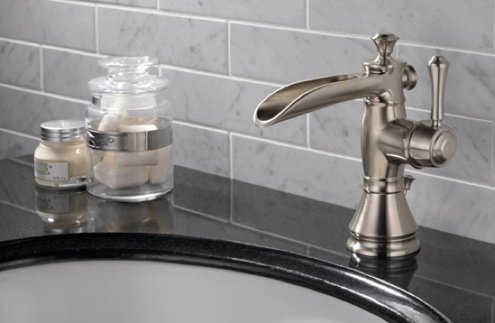The article down the page in relation to Should I Repair or Replace a Leaky Faucet? is seriously remarkable. Check it out yourself and see what you think of it.

Leaking taps may appear like a small trouble, however their impact surpasses just the inconvenience of the sound. From drainage to incurring unnecessary financial expenses and wellness threats, overlooking a dripping tap can lead to different consequences. In this short article, we'll explore why it's crucial to address this usual family issue immediately and effectively.
Waste of Water
Environmental Influence
Trickling taps contribute considerably to water wastefulness. According to the Environmental Protection Agency (EPA), a single tap trickling at one drip per second can throw away greater than 3,000 gallons of water per year. This not just strains water sources but also impacts environments and wild animals dependent on them.
Step-by-Step Overview to Dealing With a Dripping Tap
Devices Needed
Before attempting to deal with a leaking faucet, collect the needed devices, consisting of a flexible wrench, screwdrivers, substitute components (such as washers or cartridges), and plumber's tape.
Usual Faucet Issues and Their Solutions
Recognize the kind of tap and the specific problem triggering the drip. Common problems include damaged washing machines, rusty valve seats, or damaged O-rings. Describe manufacturer instructions or on the internet tutorials for step-by-step guidance on repair work.
Financial Costs
Boosted Water Expenses
Past the environmental effect, trickling faucets can pump up water expenses significantly. The gathered wastefulness with time equates right into higher energy costs, which might have been prevented with timely repair work.
Prospective Building Damages
Additionally, long term leaking can cause damage to components and surfaces surrounding the faucet. Water accumulation can cause staining, rust, and also architectural issues if left ignored, resulting in added fixing expenses.
Health Concerns
Mold and Mold Growth
The constant existence of dampness from a dripping tap produces a suitable atmosphere for mold and mildew and mold development. These fungi not only jeopardize interior air high quality but also posture health threats, especially for individuals with respiratory conditions or allergic reactions.
Waterborne Diseases
Stationary water in dripping faucets can end up being a breeding place for bacteria and various other pathogens, increasing the risk of waterborne diseases. Pollutants such as Legionella germs flourish in stationary water, potentially resulting in serious diseases when consumed or breathed in.
DIY vs. Expert Repair
Advantages and disadvantages of DIY Repair
While some may attempt to deal with a dripping faucet themselves, DIY repairs feature their own collection of difficulties. Without proper understanding and devices, do it yourself attempts can exacerbate the issue or lead to insufficient repair work, prolonging the problem.
Advantages of Employing a Specialist Plumber
Hiring a professional plumber makes certain that the underlying cause of the dripping tap is resolved successfully. Plumbing professionals have the proficiency and devices to detect and repair tap concerns efficiently, conserving time and minimizing the threat of further damages.
Environmental Obligation
Private Payment to Preservation
Taking obligation for fixing leaking taps aligns with more comprehensive efforts towards water preservation and ecological sustainability. Every individual's activities collectively make a considerable impact on preserving priceless resources.
Sustainable Living Practices
By focusing on punctual repair work and adopting water-saving habits, people add to sustainable living techniques that profit both present and future generations.
Preventive Measures
Normal Upkeep Tips
To prevent dripping faucets, carry out regular upkeep such as cleaning up aerators, inspecting for leaks, and changing damaged components quickly. Additionally, think about installing water-saving tools or updating to much more effective fixtures.
Significance of Prompt Repair Works
Dealing with dripping taps as soon as they're noticed protects against more water wastage and potential damages, ultimately conserving both water and money in the long run.
Effect On Residential Property Worth
Perception of Well-Maintained Building
Maintaining a home in good condition, including resolving maintenance concerns like trickling taps, improves its perceived value and desirability among possible buyers or lessees.
Impact on Resale Worth
Characteristics with well-kept plumbing components, including taps, command greater resale values in the property market. Resolving dripping faucets can add to a positive perception during residential or commercial property evaluations and arrangements.
Conclusion
Dealing with a trickling faucet goes beyond simple benefit; it's a necessary step toward preserving water, minimizing monetary costs, and safeguarding wellness and building. Whether via do it yourself repair services or specialist assistance, acting to deal with trickling faucets is a tiny yet impactful means to promote accountable stewardship of sources and contribute to a much healthier, a lot more sustainable future.
How to Fix a Leaky Faucet: Step-by-Step Repair Guide
A leaky faucet may seem like a simple annoyance, but if it's not fixed promptly, that leak could cost hundreds to potentially thousands. From water damage to mold, mildew, and high water bills, even a tiny leak can be catastrophic if left unattended. Damage like this can even affect the overall value of your home, so it's important to take the right approach for leaky faucet repair. You may need the help of a plumber in some cases, but we've got a few tips you can try on how to fix a leaky faucet before calling the pros.
Four Faucet Types
When you're learning how to fix a leaky faucet, the first step is knowing what kind of faucet you're working with! There are four common types.
Cartridge Faucets
Cartridge faucets come in one- or two-handled varieties. In one-handled cartridge faucets, hot and cold water combines in a single cartridge. In the two-handled versions, hot and cold water are controlled separately and mixed in the faucet.
Ball Faucets
Ball faucets have a single lever you push up and down to adjust the pressure and rotate to change the temperature. A slotted metal ball controls the amount of water allowed into the spout.
Compression Washer Faucets
They're the oldest type of faucet, but they're still used in many homes — especially older ones. Compression faucets have two separate handles that, when turned, raise or lower the washer that seals a water valve. This valve stops water from flowing through the faucet when it is turned off.
Disc Faucets
Disc faucets rarely need to be repaired due to their maintenance-free design. The water flow is controlled by two discs — the upper one raises and lowers against a fixed lower disc, creating a watertight seal. If your disc faucet starts leaking, you may need to replace the seals or clean residue buildup from the inlets.
Fixing a Leaky Faucet
Step 1: Turn Off the Water
Whether you're learning how to fix a leaky bathtub faucet or how to fix a leaky kitchen faucet, always turn off the water supply to your working area when you're fixing a leak. The last thing you want is a flood added to your list of things to fix.
Look for the shutoff valves below your sink or around the tub and turn them clockwise to stop the water flow. If your faucet doesn't have shutoff valves, you may need to turn off the water for the whole house. Check to make sure it's off by turning the faucet on. If nothing comes out, you're ready to start the repair.
Step 2: Take Apart the Faucet
How you disassemble your faucet depends on the type of fixture you have. You can use a flathead screwdriver to remove the caps on top of the handle or handles for cartridge and compression faucets. Inside, you should see handle screws. Unscrew these with a screwdriver to remove the handle.
Disc- and ball-style faucets will typically have an inlet screw near the handle, and removing that will reveal the interior of the faucet.
Detach the Valve Stem
For cartridge- and compression-style faucets, you'll see the inner valve stem or cartridge once you remove the faucet handles. If you have a compression faucet, unscrew the brass valve stem. If you have a cartridge faucet, pull out the cartridge. If your cartridge has been in place for a while, it may require some tools or extra force to remove it due to mineral deposits.
Examine and Replace Parts
Once you've removed the parts, check them out to confirm what needs to be replaced. You may see corroded rubber washers, O-rings, stems, or cartridges. On a ball-style faucet, check the seats and springs for damage.
If you need to repair a leaky disc faucet, check the inlet and seals on the lower disc.
Once you determine what parts must be replaced, visit your local hardware store. Bring the damaged parts with you to ensure you can purchase the correct components to replace them.
Clean Valves and Faucet Cavity
If you've removed a stem or cartridge, you may notice mineral buildup in the faucet's threads. Use white vinegar to clean the valve seat by soaking it for a few minutes, then scrub it away with a soft toothbrush and rinse with warm water. You can also clean the interior of the faucet in the same way.
Reassemble the Faucet
Once your faucet is cleaned and the required parts have been replaced, it's time to reassemble it. Put the pieces back together and slowly turn the water supply back on. Doing this slowly is crucial because too much initial water pressure can damage the new hardware you've just installed.
https://homewarranty.firstam.com/blog/how-to-fix-leaky-faucet

I am just very serious about Should I Repair or Replace a Leaky Faucet? and I really hope you liked my blog posting. Sharing is caring. You never know, you may just be helping someone out. I truly appreciate your readership.
 Jennifer Grey Then & Now!
Jennifer Grey Then & Now! Jason J. Richter Then & Now!
Jason J. Richter Then & Now! Kirk Cameron Then & Now!
Kirk Cameron Then & Now! Jenna Jameson Then & Now!
Jenna Jameson Then & Now! Michael C. Maronna Then & Now!
Michael C. Maronna Then & Now!